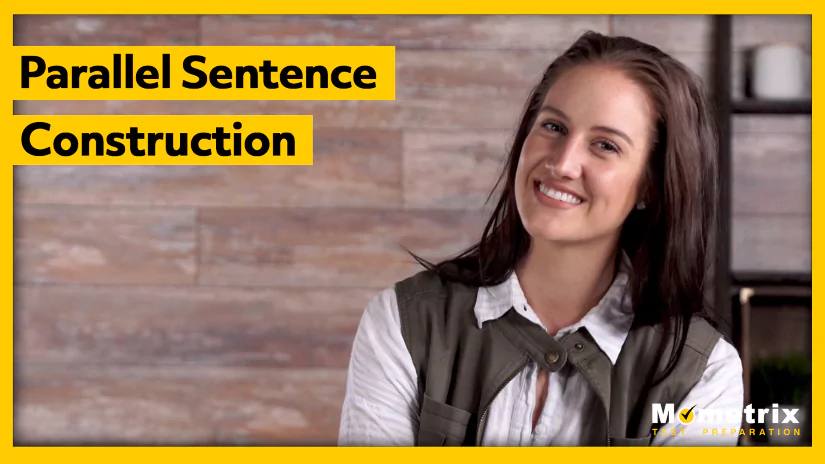
Hello, and welcome to this Mometrix lesson on graphing parallel lin-Oh, no! That’s the wrong video, we’re here today to talk about writing parallel sentences, that’s right!
Parallelism
Parallel sentence construction occurs when a grammatical structure is repeated throughout the sentence. This is officially called parallelism. Use this when comparing two or more things in your sentence, whether it be infinitives, with conjunctions, or mere present tense activities.
Including parallelism in your writing adds balance and evenly distributes the natural weight of the sentence throughout rather than building it up in one area. It also eases the reading of the sentence by providing rhythm and overall structure to the sentence.
Parallel Sentence Structure Examples
Why don’t we take a look at some examples:
Example #1
In this example, walking, hiking, and to boulder are being compared. Because these items are being compared in the sentence, there must be consistency in their grammatical structure. It’s clear to see that without this grammatical consistency, the sentence sounds very awkward.
Let’s look at the sentence when parallelism is added:
Here, walking, hiking, and bouldering are expressing parallelism because they are all in the same grammatical structure.
Example #2
Here’s the next example:
Again, we have three things being compared without parallelism, and it seems to be causing some confusion in the sentence. If we added parallel structure to this sentence, I bet it’s meaning would clear up, and we’d have a better sentence.
Let’s take a look:
By putting each of the words in their infinitive forms, we have created parallelism in our sentence. Now, it reads more smoothly and is overall easier to understand.
Without parallelism in this sentence, it just doesn’t make sense. Here’s the sentence rewritten with parallelism:
That looks so much better. In this example, natural rhythm was restored to the sentence as soon as our list of activities were structured the same.
Example #3
Here is our last example:
This sentence actually has a couple of things wrong with it. First, our two items being compared are not of the same grammatical tense, and second, a word is missing from this example that would otherwise add parallelism to the sentence. Let’s go ahead and restore order to this sentence:
After changing the tense of walks to walking and adding the word for before climbing, we can say that this sentence has parallel structure to it.

